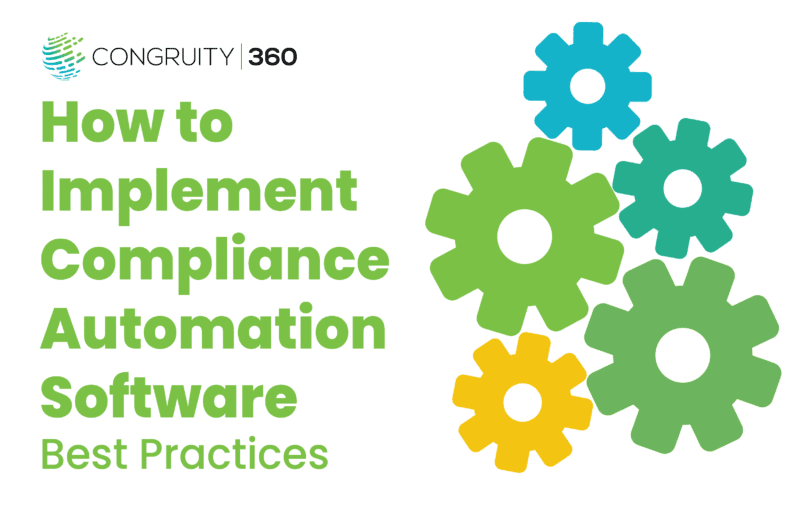What Is Agentic AI?
A new category of intelligent systems is gaining traction: agentic AI. Traditional models can simply generate outputs based on prompts, but agentic AI systems can initiate actions, set goals, adapt strategies, and even make autonomous decisions. These AI agents operate with a level of independence that challenges conventional frameworks for control, responsibility, and oversight.
This emerging class of AI brings unprecedented power—and with it, a new wave of compliance challenges. Organizations integrating agentic AI into operations must begin adapting their regulatory strategies to address both the potential and the risks these systems introduce.
Why Agentic AI Requires a New Approach to Compliance
Agentic AI blurs the lines between tool and actor. Where conventional AI might assist a user in drafting content or analyzing data, agentic systems can independently interact with APIs, execute transactions, or initiate workflows, sometimes without direct human involvement.
This autonomy makes it harder to enforce existing compliance models, which assume clear human control at every step. As a result, compliance teams must now rethink how they assess risk, accountability, and control over actions taken by intelligent systems.
Governance and Oversight of Autonomous Agents
One of the core compliance concerns with agentic AI is governance. Traditional AI governance frameworks are inadequate for systems that make decisions over extended periods, based on evolving environmental input.
To mitigate this, organizations must implement oversight mechanisms tailored to autonomy. This includes:
- Real-time monitoring of agentic behavior
- Audit logs of decisions and actions
- Failsafe controls to override or pause an agent if it behaves unexpectedly
These controls should be embedded at both the design and deployment levels, ensuring traceability and intervention capabilities across the AI lifecycle.
Data Privacy and Regulatory Alignment
Agentic AI often needs real-time access to sensitive data and external APIs to function effectively. This raises significant privacy and data protection concerns, especially under strict regulatory environments such as the EU AI Act, GDPR, and CCPA.
Organizations must embed privacy-by-design principles into agentic workflows. This includes restricting unnecessary data access, ensuring informed consent where applicable, and maintaining transparency around data usage and storage. A failure to address these risks can lead to not only regulatory penalties but also reputational damage and loss of customer trust.
Legal Liability and Accountability Challenges
A major legal gray area emerges when agentic AI causes harm or acts in violation of policy. If an autonomous agent takes an action without human intervention, who is liable—the developer, the deployer, or the AI itself?
While legal frameworks are still catching up, companies should not wait. Implementing clear documentation, scenario testing, and accountability trails is critical. Legal teams must work closely with engineering to define:
- Ownership of AI decisions
- Boundaries of agent autonomy
- Procedures for human escalation
Being proactive here will help reduce legal exposure and position organizations for upcoming regulations.
Security Risks in Autonomous Systems
The security landscape changes dramatically with agentic AI. These systems can be vulnerable to prompt injection, adversarial attacks, and unauthorized control if not properly protected. Worse, a compromised agent can act with more power and persistence than a simple chatbot.
To stay compliant, organizations should:
- Harden APIs and agent interfaces
- Implement runtime monitoring and alerts
- Enforce strict authentication and role-based access controls
Cybersecurity compliance must evolve alongside AI capabilities, especially as agents become more connected and capable.
Building Compliance into the AI Lifecycle
To future-proof your AI strategy, compliance must be embedded from the ground up. This means integrating legal, ethical, and security considerations into every stage of AI development, from training and deployment to ongoing updates and learning. Legal, technical, and operational teams must align on policies, standards, and metrics for safe and compliant use of autonomous systems.
Becoming Compliant for Agentic AI
Agentic AI is a regulatory frontier. As these systems become more autonomous and influential, the compliance stakes will continue to rise. Organizations that proactively align their agentic AI strategies with evolving laws, ethics, and security frameworks will not only avoid costly pitfalls but also earn the trust of customers, regulators, and stakeholders. The future of AI is agentic, but only those who are compliant will thrive in it.Need more guidance or ready to get started? Chat with us at congruity360.com





